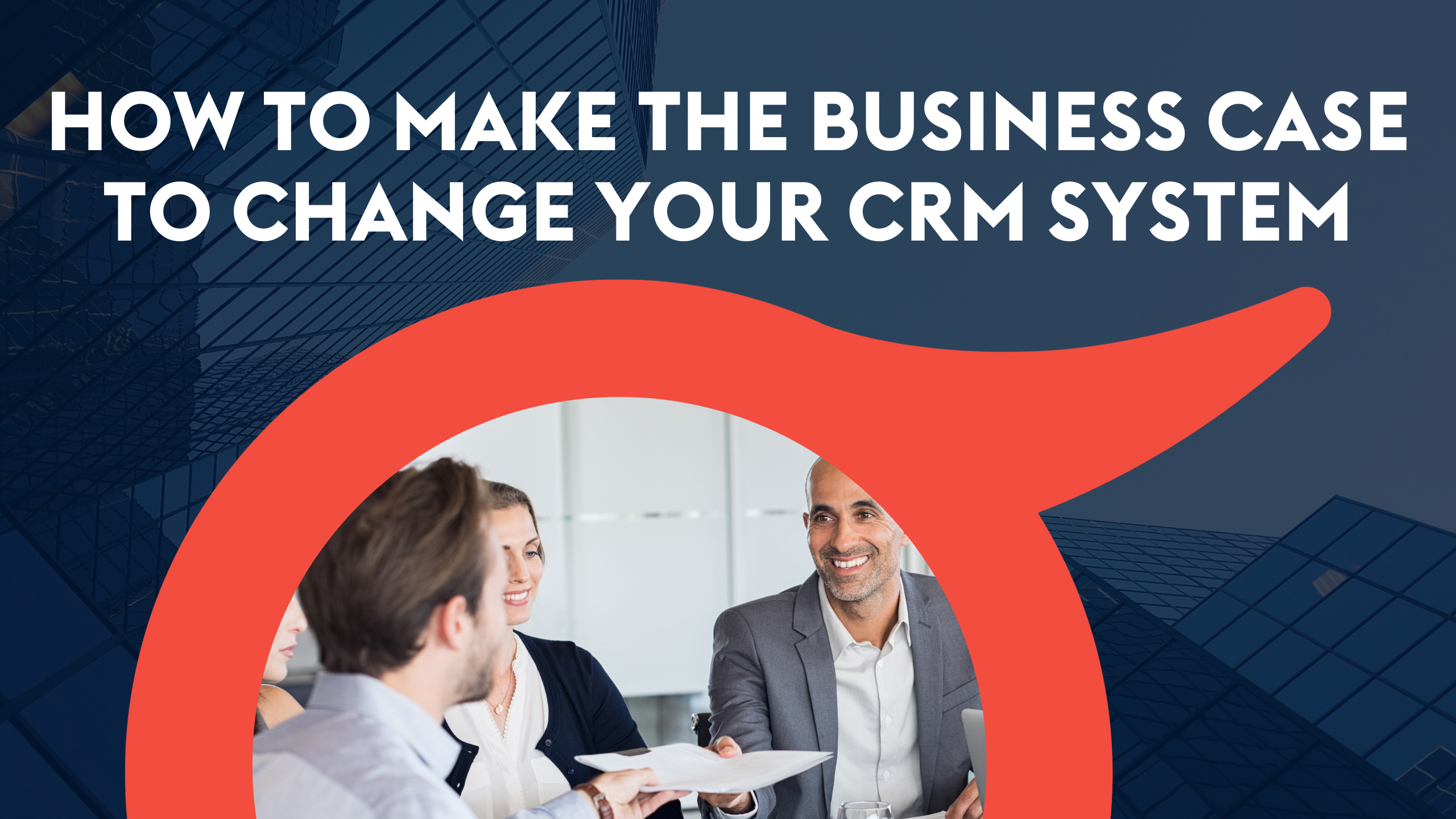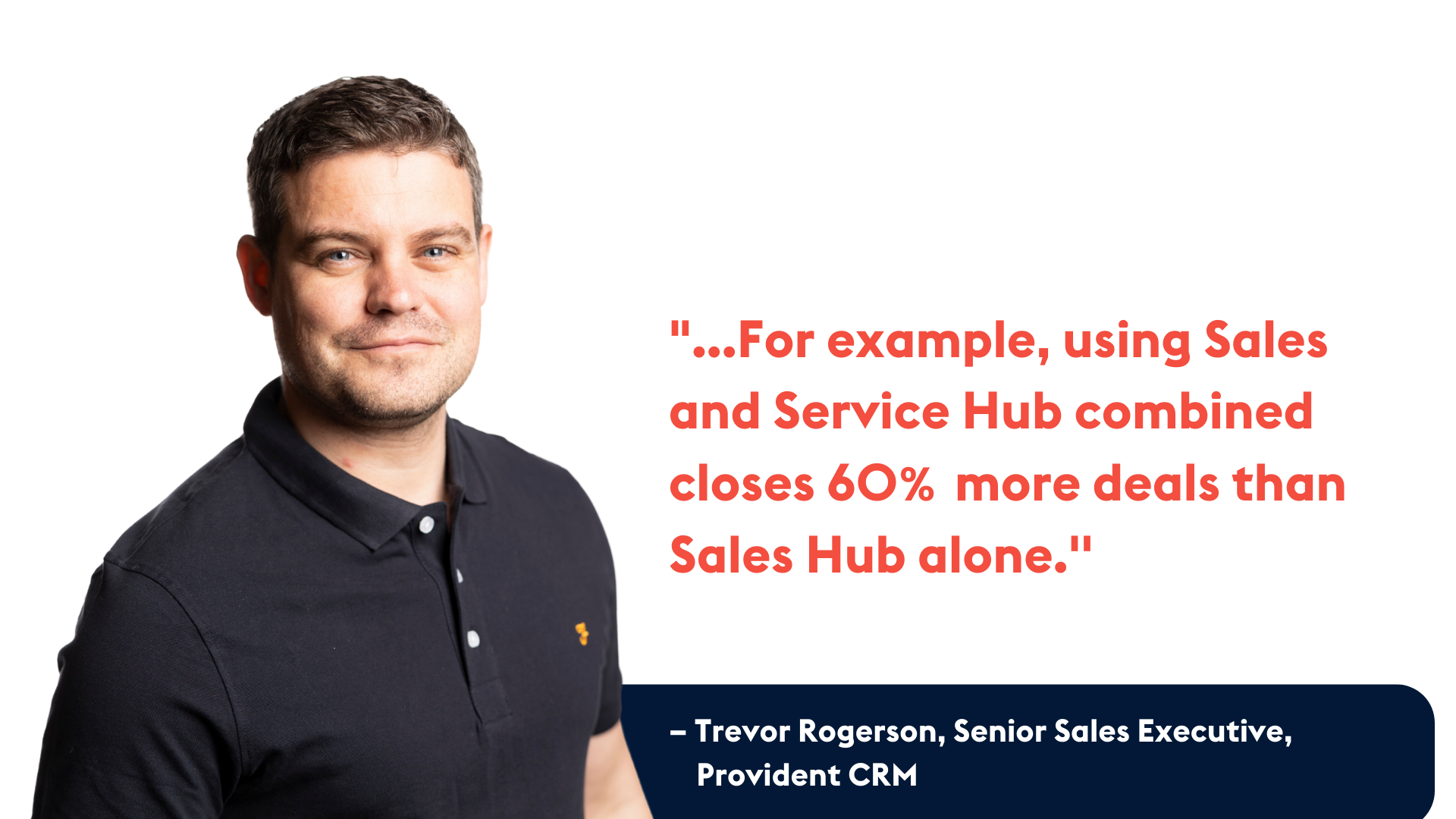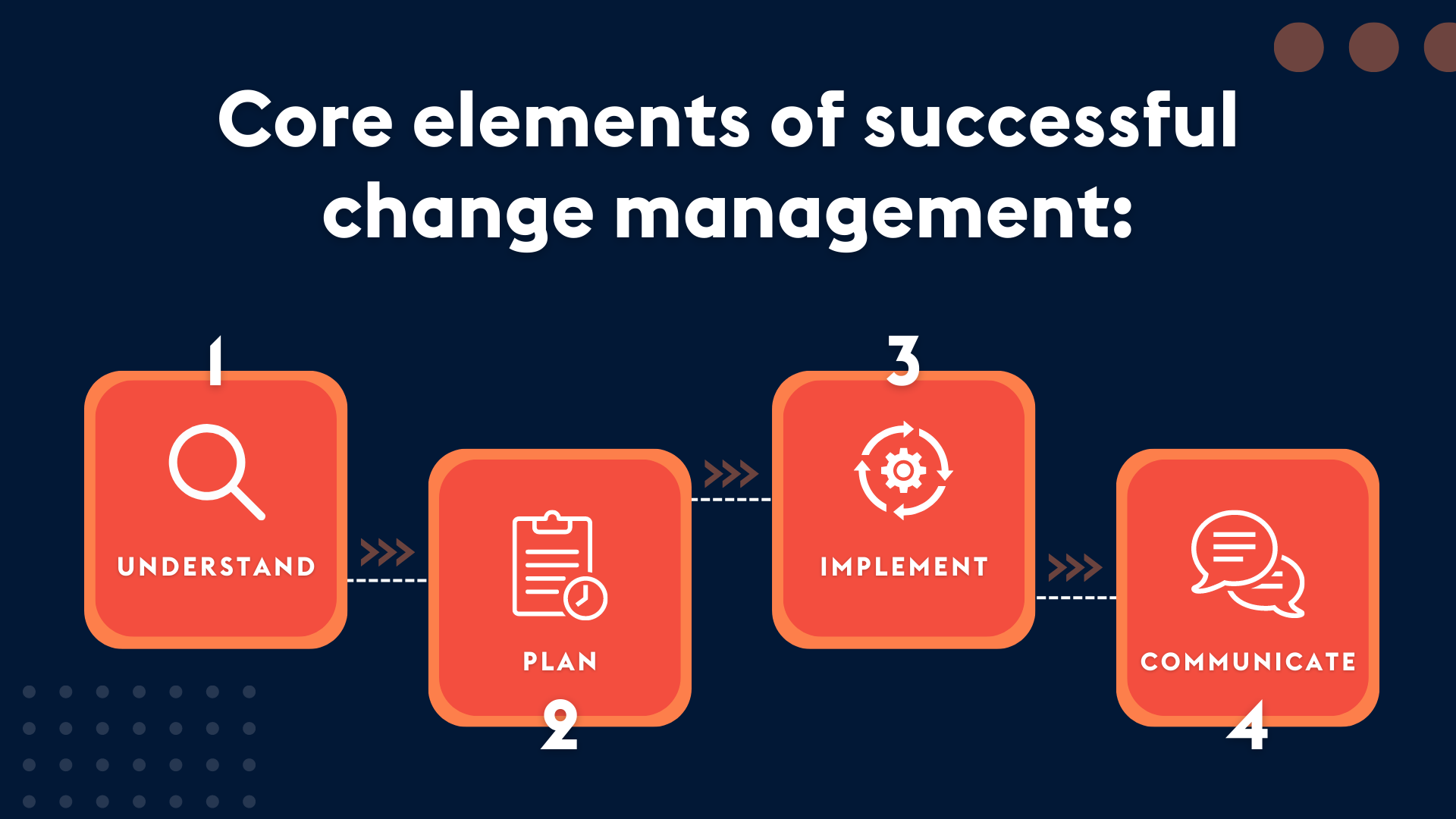
A change of CRM can transform a company’s fortunes. From your seat in sales or marketing, you know this to be true. So convincing management comes next. As with any key investment, making a strong business case is vital. We brought together Trevor Rogerson, one of our Senior Sales Executives, and Olivia Kirwan of HubSpot to share their insights on making your case for CRM change.
Olivia has worked with HubSpot for 10 years, across the corporate and partner teams, and is now the strategic HubSpot channel account manager for our team at Provident CRM. Her wide-ranging experience and business case expertise make her a valuable knowledge source for this topic. And, as she emphasised herself, the importance of making your case for change is a far bigger question than which provider you choose. The right CRM, implemented with the right support, can reshape your business. Increasing leads, boosting sales, elevating revenue and streamlining your teams around a single source of truth.
Here, Olivia and Trevor map making your business case for CRM change, from realising it’s needed to stupendous results.
Feeling day-to-day faults and gaps in your current CRM system is the top driver of change. For many businesses, CRMs were implemented in a rush as COVID pushed lots of us online — and now the cracks are starting to show.
Trevor shares the leading pain point that means it’s time for a CRM shift: siloed teams. “Marketing and sales aren’t communicating. There’s no handoff between sales and service. Setting up a quality CRM is fundamental to aligning those different departments,” he says. “This is where a provider like HubSpot can streamline your full customer journey, from the moment marketing engages with a prospect, to handing that person over to the sales team, to bringing them through to services. Everybody’s working with the same information.”
With this shared, accurate data, you can gauge your close rates and map them against factors such as marketing campaigns, to pinpoint which works best. You can deliver reports with hard facts: the lead sources generating your best ROI, which product lines are selling well, where there’s churn. “For management, the key is helping them to see the bigger-picture benefits of enhancing cross-team communication. It helps to build efficient processes, which will generate a significant ROI by both freeing up employee time and giving management the information they need to make the right decisions for the future,” Trevor adds.
For Olivia, the tipping point is realising you’ve outgrown your CRM. It might be cramping your ambition as it doesn’t have the capability you need. Or it’s no longer fit for purpose: overly complex, with poor visibility, confusing integrations and a lack of provider support. She explains: “All of a sudden it gets complex and you’re left thinking: ‘How can I get a system that’s relevant and easy to use, with high user adoption and a single system for all of us?’”
Regardless of your sector, industry and current CRM status, Olivia recommends starting by asking the basic questions:
Clarifying and understanding why you’re using a CRM helps you identify the challenges you’re facing with it. Common ones include:
Lacklustre user adoption, leading to poor-quality data
Are your people using your CRM? Really? If your data input process is too time-consuming, your sales team (understandably) won’t feel it’s worth it. Without this input, there’s no quality data pool for your managers to extract or report on. Quality data is a non-negotiable starting point, so your sales reps need an intuitive, rapid input process. Clean, correct and usable data is essential — and only a well-implemented CRM allows you to gather it.
Losing money through inertia
You might be locked into a multi-year contract for renewing your existing CRM, which it’ll cost you to exit. But if your user adoption is painfully low, it’ll cost your business to stick out the contract, too. Once you get clarity on your options, the price of doing nothing could dwarf the price of breaking free and starting afresh with an enhanced CRM.
Done right, a new CRM changes the game
Choosing the right provider and method to improve your CRM requires care, diligence and expertise. When you nail it, it can fundamentally change your business:
Overall, setting in motion a virtuous circle that can transform your business outlook. Perhaps the greatest challenge when it comes to changing your CRM, though, is getting management on board — so let’s look at how to overcome that.
The common CRM change challenges outlined above require significant funds and commitment to surmount. That’s the first reason why management support is key. The second is that enthusiastic uptake of your new CRM is essential for success. As we’ve seen, low user adoption is a CRM killer. With management fully behind your new CRM, it’s easier to achieve the cross-company uptake needed.
Olivia and Trevor share their top pointers for making an effective case to management for your new CRM. Get that vital support and make change happen by:
1. Being clear on needs and goals
Paint the picture of your company’s as-is CRM pain points. Are sales faltering? Leads being lost? Customer retention nose-diving because your people don’t know who’s already spoken to whom?
Draw out hard and anecdotal evidence that shows the issues as things stand. Present the challenges you’re facing strongly and concisely. Then lay out your options for change, the benefits of a new CRM and the goals it can reasonably achieve. Easy wins can include increasing lead conversions, enhancing alignment across marketing and sales, and improving your clients’ customer service journey.
2. Showing the costs of stasis
As we touched on above, doing nothing often isn’t a neutral or safe option. It can cost your business in potential and actual success. What will you lose by changing nothing?
3. Using imagery
Strong imagery helps make sense of abstract CRM systems. Contrast an image representing your existing CRM architecture with one showing what your new CRM architecture will look like. From tangled to intuitive, a burden to a sidekick.
A good CRM makes this easy. It becomes your company’s single source of truth, powering all its teams. The importance of having all your data and processes in one system, to support everyone’s work, can’t be underestimated: the time saved, the miscommunications and errors avoided, the opportunities acted on. Showing this with effective imagery is a business case must.
4. Outlining ROI, costs and timescale
What leadership want to see, naturally, is a strong return on CRM investment. What will it cost to implement your new-and-improved CRM, and what will it earn in return? Use HubSpot’s ROI calculator to find out — powered by data from 177,000+ customers in 120 countries.
“The ROI calculator is fantastic for painting a picture for management,” says Trevor. “HubSpot also have wide-ranging reports showing lead closure rates for their various services. For example, using Sales and Service Hub combined closes 60% more deals than Sales Hub alone.”
Map costs out, too, based on provider licensing and working with an implementation partner. “Combining a new CRM licence with a partner like Provident CRM is invaluable. You’ll probably even underestimate your ROI, as you’ll have their expert team setting your CRM up correctly. They’ll deep-dive into your architecture, structure and tech stack to implement and tailor the software based on your business goals,” Olivia explains.
At Provident CRM, we exist because investing in the software alone isn’t enough to guarantee success. You need quality roll-out, customisation to your business needs and expert onboarding support to see your new CRM take off as it should. That’s the pathway to true ROI.

5. Getting everyone on the same page
If you’re working with a vendor (like HubSpot) and a supporting partner (like Provident CRM), a strong business case ensures everyone shares a common goal. Everyone will know the value of your CRM change and how you’re seeking to transform your business.
6. Pre-empting likely objections
Olivia shares her tried and tested tactic: “When I’m working on a deal, I map out the stakeholders and potential objections they’ll raise before I pitch. That means I can address those concerns in my presentation before they even have to raise them,” she explains.
For example, moving data safely from your old CRM system to your new one can be a risk. To pre-empt this possible objection, cover:
“Another thing both myself and Trevor do is work together to add value,” Olivia continues. “We understand the client’s business by undergoing the prospect process: visiting the website, filling out their forms, seeing what their sales and marketing are like. We share our takeaways with the potential client, showing how a single source of truth would plug gaps and elevate their business. As I see it, that’s another reason to work with a partner like Provident CRM. They’ll spot these pluggable gaps a lot quicker, setting your new system up to fix them, quickly.”

Trevor: From lead-gen loss to profit for a real estate firm in California
This firm employed 100+ real estate agents and was spending $1.2 million/year on lead generation. But they were disappointed with the quality of leads they were receiving. Pulling some reports, we diagnosed the major issue: they were converting leads at a rate of just 1%. They were distributing leads in a round-robin, letting agents work on them at their own pace. There was no drive, urgency or motivation to follow up rapidly and effectively.
We advised setting up a CRM system with automated lead distribution. Every agent would be notified simultaneously about an incoming lead, motivating them to be quick off the mark. Numbers backed our approach: calling a lead within the first 5 minutes has a 21x higher conversion rate than calling them after 30 minutes.
Over 6 months with the new CRM system, we increased the firm’s lead conversion rate from 1% to 4% — a huge turnaround. At 1% they were losing money; at 4% they were making about 3x back on their lead generation spend. They were making over $3 million/year from their leads programme, from a 100-user CRM that cost approximately $40k/year.
Olivia: Sales up +192% for an education company
COVID impacted this course-selling company, shifting them online and pressurising increases in sales volume and revenue. Implementing HubSpot as a single source of truth enabled them to focus on these processes and map their path to success.
The results speak for themselves:
You can filter HubSpot case studies per industry, product, company size and more to find case studies relevant to you. If you’re building a strong case to make to management, they’re a handy resource.
“I’ve been with HubSpot for over 10 years, and I know the collaborative approach works best. CRM provider, CRM implementation partner and customer are one team, working together to roll out a CRM that best suits your business needs and goals. You can’t beat it,” says Olivia.
The Provident CRM team is here to help you build your case to management, and then see your CRM transformation through to success. To find out more, reach out to us via the link below.